The carpentry
1. GENERAL CONTEXT
It is surprising that the wood industry was one of the most important in Valencia in the twentieth century, due to the small amount of forest present in the territory. The raw material was actually transported from Aragon, Cuenca or Teruel to the city, where it was sawn and redistributed. Valencia was supplied with wood mainly through the Turia, rather than by land, since the Middle Ages. This means of transport was called “maderada” and is associated with trades that have disappeared such as crocheter, who guided the trunks through the current like a shepherd.
The factories of planks, windows and doors were traditionally located near the bridge of Sant Josep, since it was the place where the wood of the Turia was extracted. There were numerous both in the area of Guillem de Castro and in the Plain of Saidia, where one of the most powerful logging industries could be found: that of the Comín brothers.
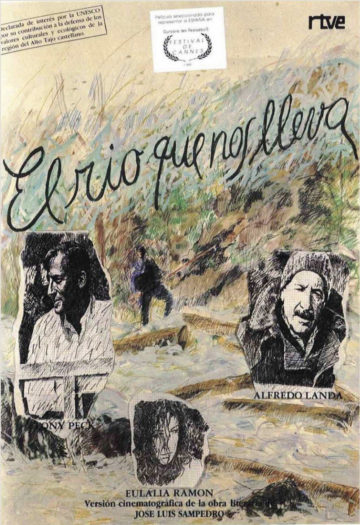
In addition to around the Sant Josep bridge, the port area also saw an expansion of the timber industry in the late nineteenth century. One of the causes was the manufacture of boxes and barrels for the export of agricultural products and wine. The other reason was the increasing importation of sea and rail transport, which made the maderades disappear.
2. PRODUCTION / CHARACTERISTICS
In the construction of buildings, wood is used in the structure (slabs, beams) and enclosures (ceilings, windows and doors), but it is also worked from an aesthetic point of view in the form of coffered ceilings, cobblestones and doors with moldings decorated with organic shapes or typical of the natural world. Even so, for a long time carpenters were known as fat carpenters, while cabinetmakers or fine carpenters made furniture and work considered more delicate.
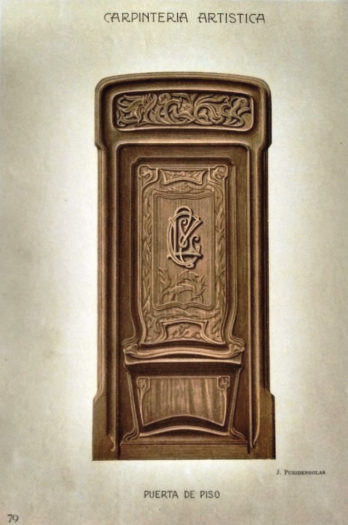
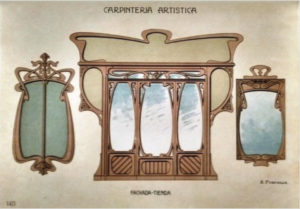
One of the most appreciated woods was the mobile wood, which was named for the import from the port of Mobile (USA) in the late nineteenth century. It came from up to four species of pine, large planks were obtained and presented greater resistance against pests.
With Art Nouveau we find a very careful application of artistic carpentry, where curved lines predominate, and which expanded among artisans through catalogues and albums with engravings.
In Valencia, buildings from the early twentieth century stand out with wood as the protagonist: the ticket offices and plinths of the North Station (1907-1917) and the Ferrer Building (1908), which presents curved shapes and elements reminiscent of nature in the door and lobby.
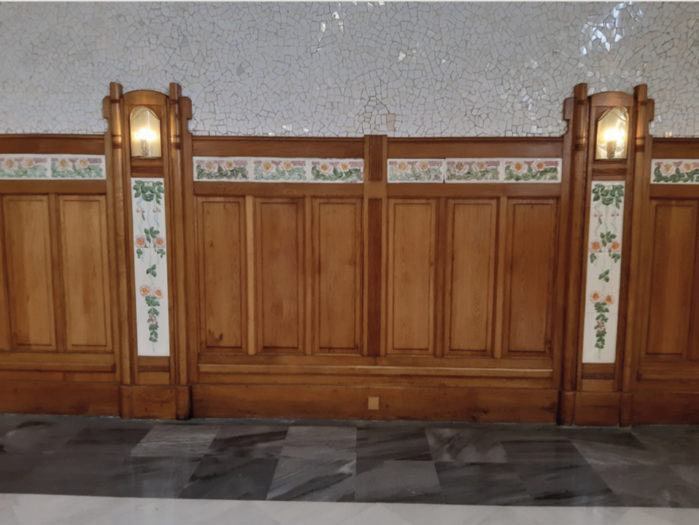
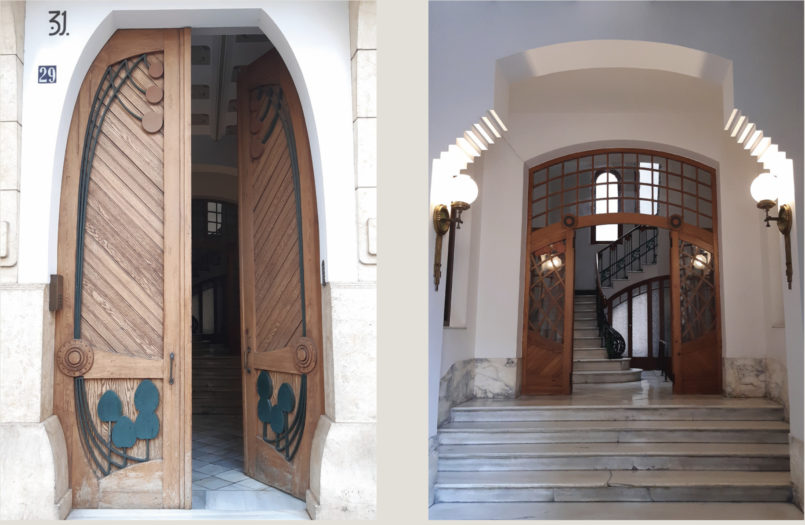
3. EXAMPLES OF THE CABANYAL
In the houses of the Cabanyal, we find a functional carpentry focused on doors and windows. They are simple and practical elements, where the decorative elements do not stand out. In the doors, there is a difference between the two sheets and a symmetrical pattern is followed with panels and moldings that produce angles and shadows. Some of the most decorated are located in C/ de la Reina and C/ Barraca.
This is often combined with windows and grilles on the doors themselves, which provide lightness and aesthetic brushwork. At the same time, the security and privacy of the inhabitants is not left aside, an essential function of these elements that separate the intimate from the public.
Another artistic application closely related to wood and carpentry is molding, used to decorate the upper and sides of entrances.
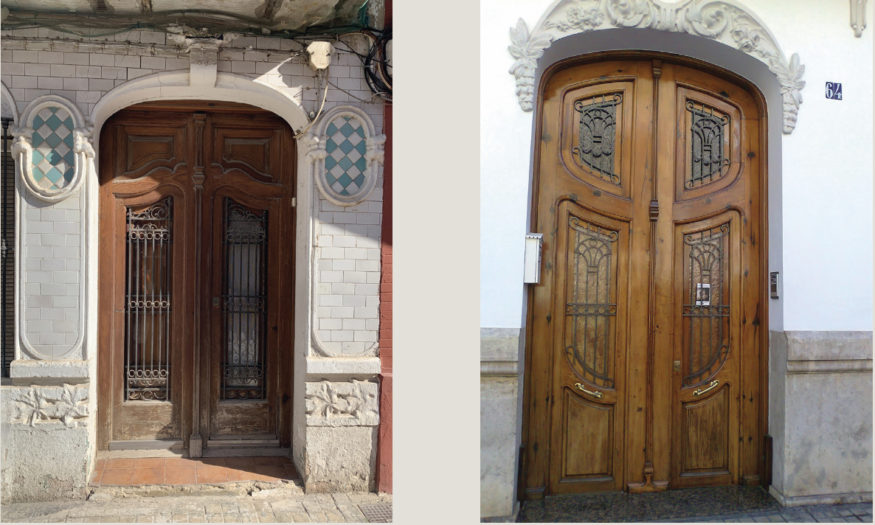
Another of the most particular features of the Cabanyal, and of the entire city of Valencia, is the lambrequí. There are few examples made of wood of this element that covered the Venetian blinds, if we compare with the large amount present in the neighborhood of cast iron cobblestones. Perhaps its presence is less due to the conservation of the material, which may be more affected by the humid and salty climate of this area of the city. Whether made of wood or iron, they share common characteristics such as die-cutting or reliefs of elements of nature.
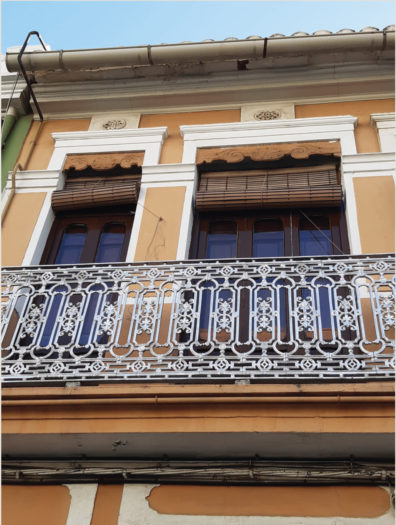
Longest text inside the file